There are a few different options regarding the proper lighting of your home. Downlighting vs. uplighting are two of the most popular choices, but what’s the difference? And which one should you choose for your home? This guide will help you understand the difference between downlighting and uplighting to make the best decision for your home.
What Should You Uplight?
Uplight, also known as accent lighting, is a type of lighting placed below eye level (at ground level) and points upward. Uplighting is often used to highlight features in a room, such as artwork, plants, and architectural details. Here are some places to uplight:
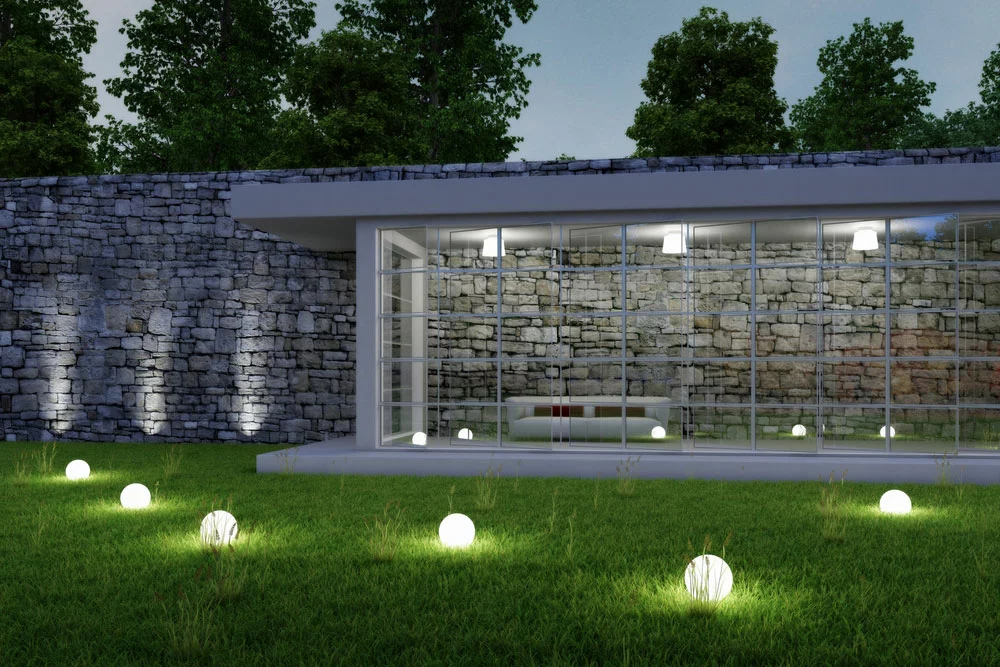
Garden architecture by night with glowing spheres in gras
A Statue or Fountain
One of the most popular things to uplight is a statue or fountain. Uplighting can highlight the features of the flat surface and make it more visible.
Architectural Columns
Effects of uplighting are a great way to highlight the features of your home’s architecture. Placing landscape lights at the base of columns will create a dramatic effect that will impress your guests.
Trees
Uplighting can show off dramatic plants and trees, making them appear taller. Not only that, but it can also highlight the texture of the bark and the shape of the leaves.
What Should You Downlight?
Downlighting is a type of lighting placed above eye level and points downward. Downlighting is often used to illuminate a specific area, such as a work surface, water feature, flower bed, landscape bed, or reading area.
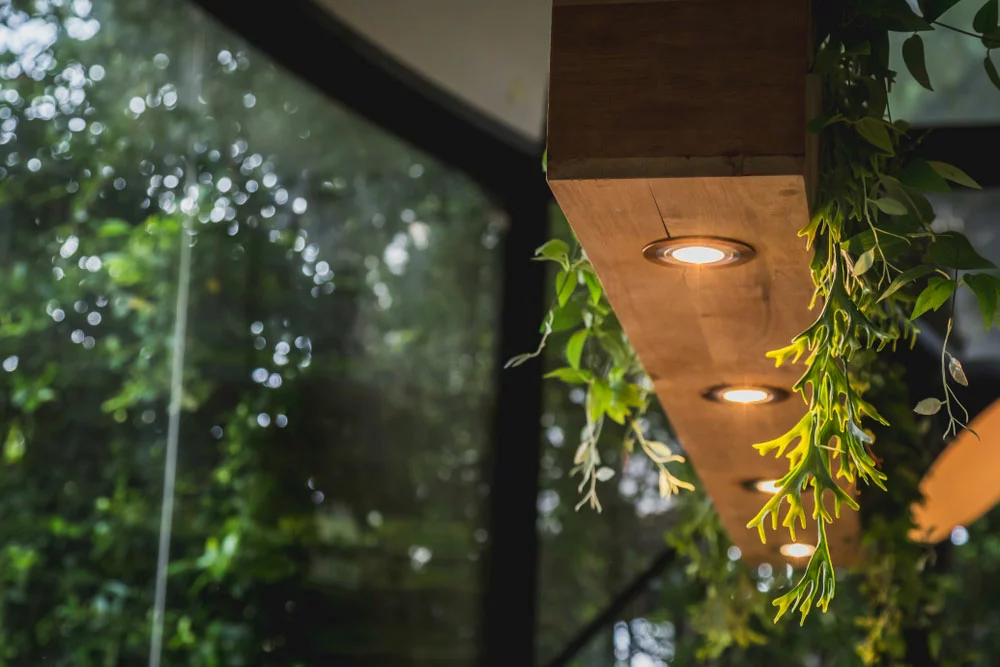
Wooden hanging ceiling lamps from plant pots
Downlighting can also create a more focused beam of light, which is excellent for task lighting. Here are some places to downlight:
Patios and Walkways
Downlighting is a great way to light up patios and walkways. Placing lights above eye level will create a more focused beam of light that will make it easier to see where you’re going.
Low Growing Garden Plants
Ambient lighting is a great way to highlight low-growing garden plants. The focused beam of light will show off the plant’s features and make it more visible.
Porch Steps
This light is a great way to illuminate the area and make it safer if you have a porch with steps in the outdoor living space.
Outdoor Seating Areas
Downlighting can create a cozy outdoor lighting design in outdoor spaces such as seating areas. The focused beam of light will provide just enough light to see your food and drink, but it won’t be so bright that it’s intrusive.
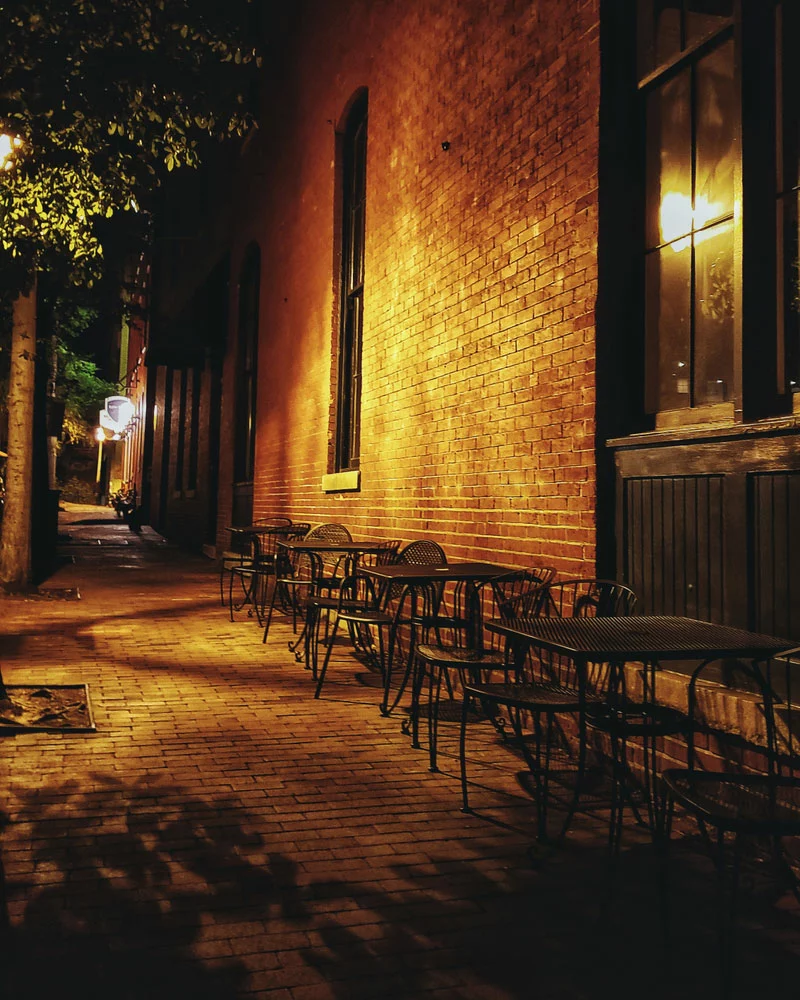
Outdoor seating areas at night
When Should You Use Moonlighting?
Moonlighting is a type of downlighting that replicates the light of the moon. Moonlighting is often used to create a romantic or whimsical atmosphere.
You can also use Moonlighting to highlight specific features in a landscape, such as tall trees, statues, or fountains. Here is when you should use Moonlighting:
To Create a Romantic Atmosphere
If you want to create a romantic atmosphere, moonlighting is a great option. The soft, diffused light of the moon can create a dreamy and ethereal ambiance.
To Highlight Features in a Landscape
If you want to highlight specific features in your landscape, moonlighting is a great option for landscape lighting. The focused beam of light will show off the features of the landscape and make them more visible.
Whether a swimming pool or a garden, moonlighting can add a touch of magic to any landscape.
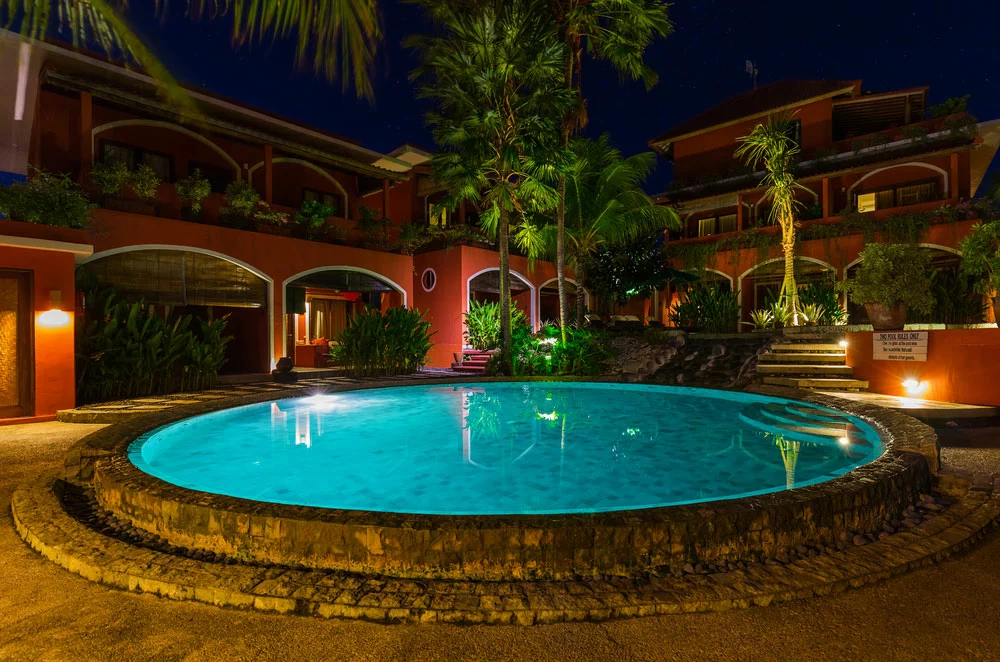
Pool in hotel
Driveways and Walkways
Moonlighting is an excellent option if you’re looking to add some extra lighting along pathways. The focused beam of light will make it easier to see where you’re going and help you avoid any tripping hazards, providing safety for people walking.
Uplight vs. Downlight Lighting Fixtures Types
Downlight Lighting Fixtures
- Gooseneck: Gooseneck has a look of the 20th century, its arm is wall mounted, and the shade hangs down. We use this type of lighting in commercial settings and add a retro and unique look to any space.
- Task lighting: Task lighting is a type of lighting that provides focused light on a specific area. This type of lighting is perfect for reading, working, or any other activity that requires concentrated light.
- Table Lamps: Table lamps provide focused light that is perfect for reading or working.
- Pendant Style Light Fixtures: Pendant style light fixtures are decorative lighting hanging from the ceiling. Pendant lights come in various styles, and we can use them to add a touch of decoration to any space.
Uplight Lighting Fixtures
- Wall Sconces: Wall sconces are a type of lighting mounted on the wall pointing upwards. Wall sconces are a great way to add ambient light to any space, and we can use them as an alternative to traditional ceiling lights.
- Troffer Units: Troffer units locate the drop ceiling. They provide diffused, even light that is perfect for office or commercial spaces.
Downlighting Vs. Uplighting: How to Choose?
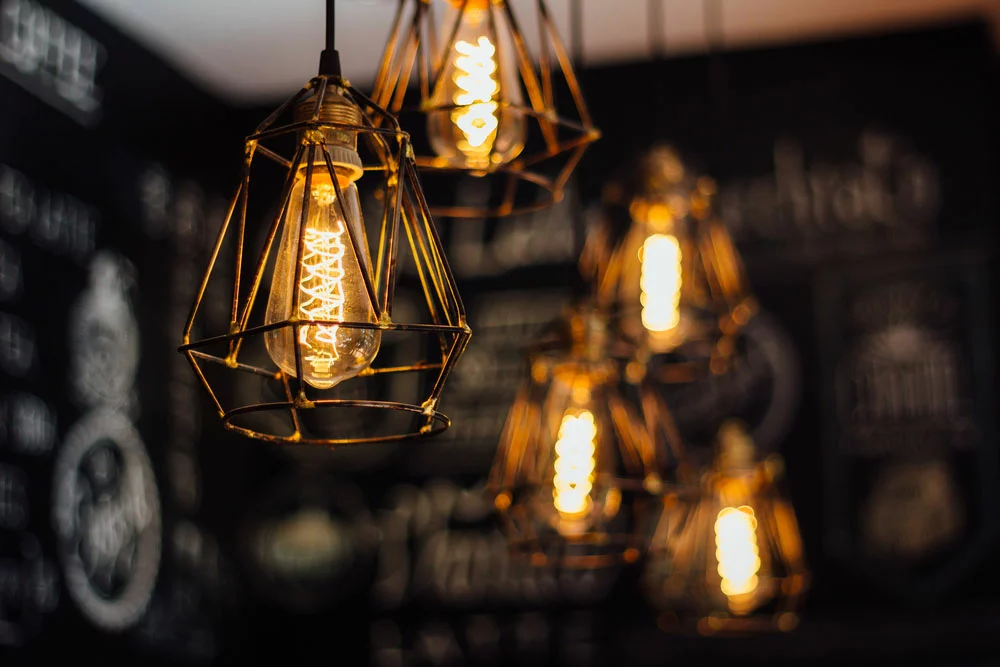
Indoor light
First, consider the purpose of the lighting. If you want to accentuate features of your home, such as architectural features, tree canopies, or landscaping, then uplighting is the way to go.
On the other hand, if you’re more concerned with providing general illumination and security, then downlighting is the better option.
Next, think about the distribution of light. Uplighting creates more of a spotlight effect, while downlighting is more evenly spread. Remember when trying to achieve a specific look.
Finally, consider the maintenance involved. Uplighting generally requires more upkeep.
Layering Light: Balance Downlighting Vs. Uplighting
For a well-lit space, you’ll need to balance uplighting and downlighting. You can do this by layering light fixtures of different types and heights.
Start with downlights for general illumination, then add uplights to highlight specific features. Finally, add task lighting for activities that require concentrated light, such as reading or working.
With a mix of uplighting and downlighting, you can create a well-lit space that replicates the sun’s natural light. It will make your home more inviting and help you save on energy costs.
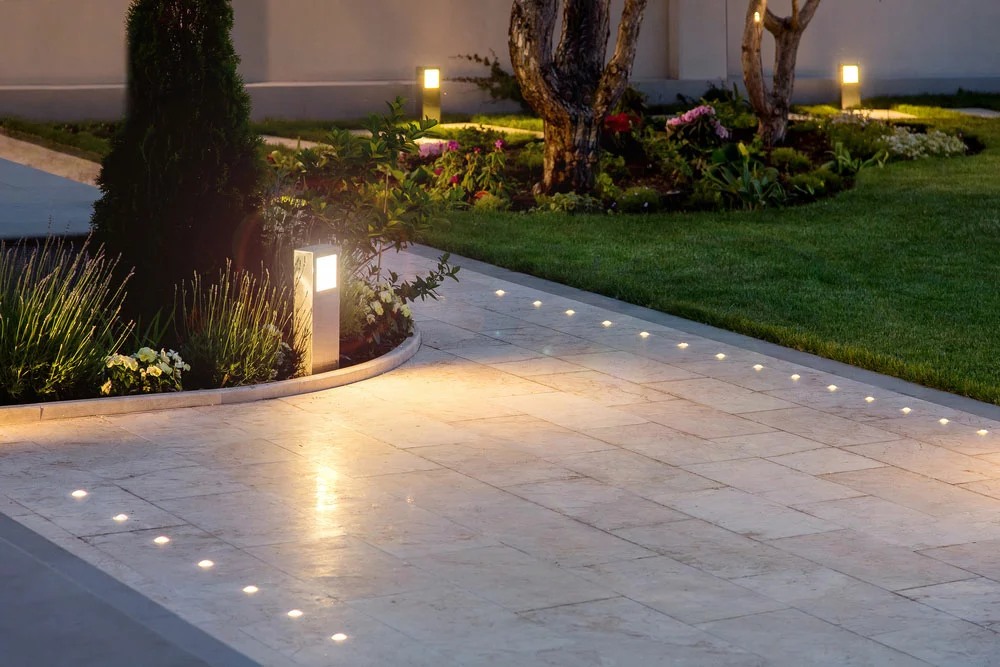
Landscape with different light fixtures
Conclusion
So, which type of exterior lighting is right for you? It all comes down to personal preference and what you’re trying to achieve.
Uplighting and downlighting each have unique benefits, so choosing the option that best fits your needs is essential. We hope this article has helped you make a decision! Thanks for reading!
